It's Time for Industries to Band Together and Launch Job Training Programs


One of the tragedies of this pandemic is that many workers who lost their jobs have few options. Sure, they could work for a retailer or delivery service, but those jobs come with their own risks and, in the long term, offer little room for growth. Job training programs are almost non-existent now — and historically here in the U.S. they're often overhyped and underfunded.
The disparities in the job market are particularly acute now. Take, for example, what’s happened with Airbnb, which has been hit hard by this crisis. To its credit, the online accommodation booking service harnessed its tech resources to create an online “talent directory” to help its laid-off employees retrench and find their next jobs. Such an option helps at a time when many human resources and outplacement firms can’t offer their services due to social distancing guidelines. For retail and many gig economy workers, however, such options have rarely existed upon receiving a pink slip.
Various industries could certainly hone their social responsibility chops by pooling what resources they have to help citizens retool, retrain and reenter the workforce. So far, many of these private-sector collaborations, such as the much ballyhooed COVID-19 testing centers that were supposed to spring up at retail stores’ parking lots, have fallen flat. Now America’s top companies, whether they are in the apparel, retail, hospitality, pharmaceutical or healthcare industries have an opportunity to shine.
With the U.S. death toll alone expected to hit 90,000 at any moment as of press time, it’s pretty clear this crisis will not subside anytime soon, no matter how much sunlight or disinfectant will be out there in the coming summer months. And even if the novel coronavirus indeed “goes away,” we’ll still have lingering effects for a long time.
We’re clearly going to need more healthcare industry workers, whether they work on the front lines, help with pesky administrative tasks, or drop off needed goods, food or medicine. We can point to one example in Sweden, where furloughed airline workers are being retrained in basic hospital duties to help fill the gaps in that country’s strained healthcare system.
The U.S. could benefit from such an effort. Manufacturers could manufacture that much-needed protective equipment. The wider healthcare sector could mobilize to fund and execute needed training. Airlines could transport these newly trained citizens to places where they are needed. The hospitality sector could house these people in far-flung rural areas or other “hotspots” that will surely fester over the next several months. The retail and commercial real estate industries could find space where services such as counseling or testing could be done.
There’s no shortage of blue-collar, white-collar and new grads – from high school, college or otherwise – who would be willing to help if they could retrain and be fairly compensated. It’s just that right now, they don’t know where to go or how to help. America’s top companies could pitch in and help getting these monumental tasks done. After all, while we usually rely on nonprofits to perform these functions, many are shuttered or barely in operation, as shelter-in-place orders have largely stalled these organizations’ fundraising activities.
Actions that buttress the U.S. healthcare system would be much more effective than what the editorial board of TriplePundit currently sees out there. Sure, those seven-figure donations sound generous, but the public relations firms pitching this “generosity” never mention that these sums of money are at most one one-thousandth of a typical company’s revenues – and in any event, we here at 3p reply that such announcements are in reality table stakes.
Bottom line, the private sector needs to do better. We don’t need warm thoughts or well wishes or knowing that companies are thinking of us. And healthcare workers don’t need free pizza or prepackaged fruit cups. They need real, authentic and logistical support. Now.
Image credit: JC Gellidon/Unsplash
Proposed Coronavirus Relief Package Includes Elements of ‘Essential Workers Bill of Rights,’ But Is It Enough?
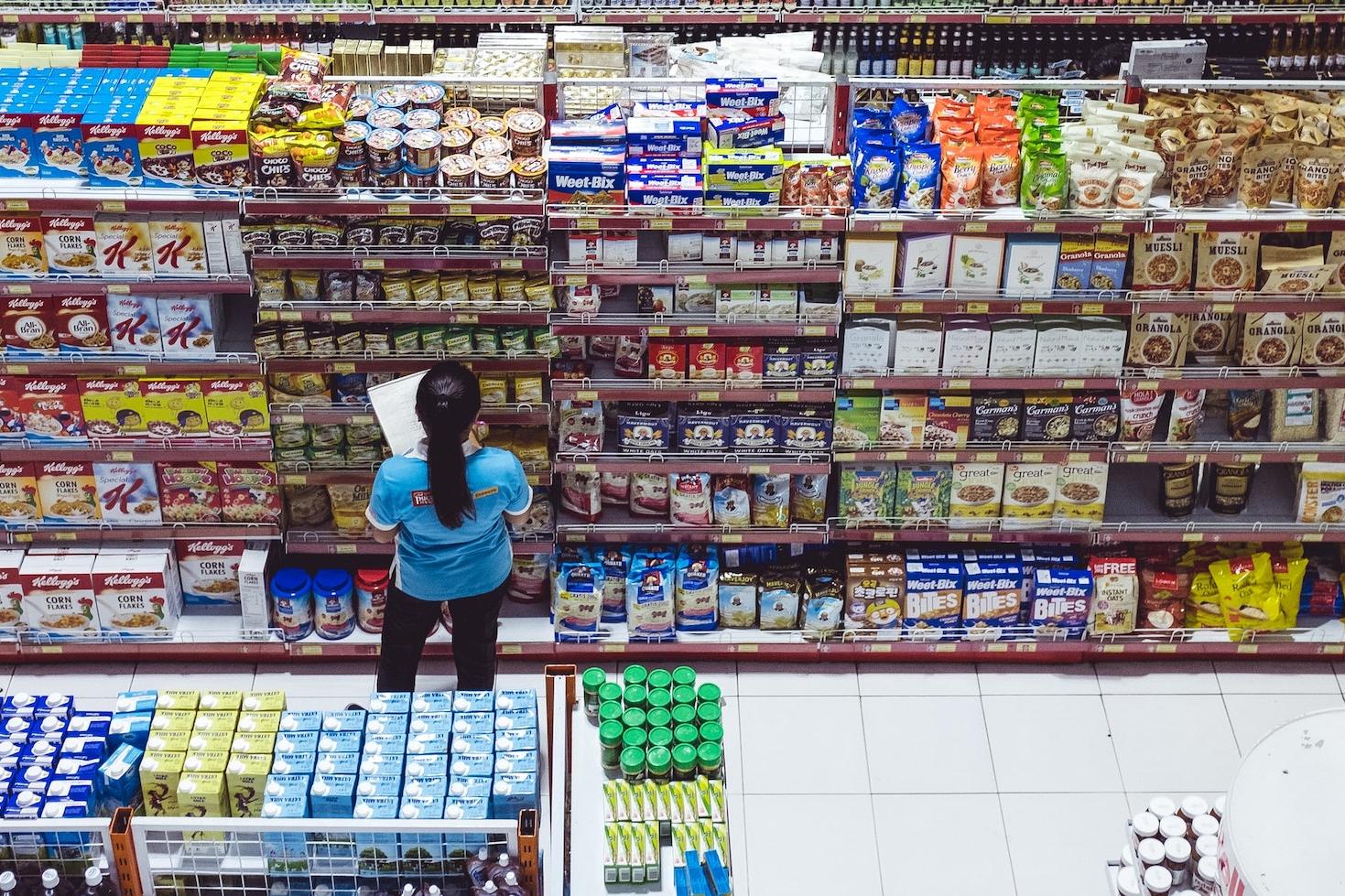
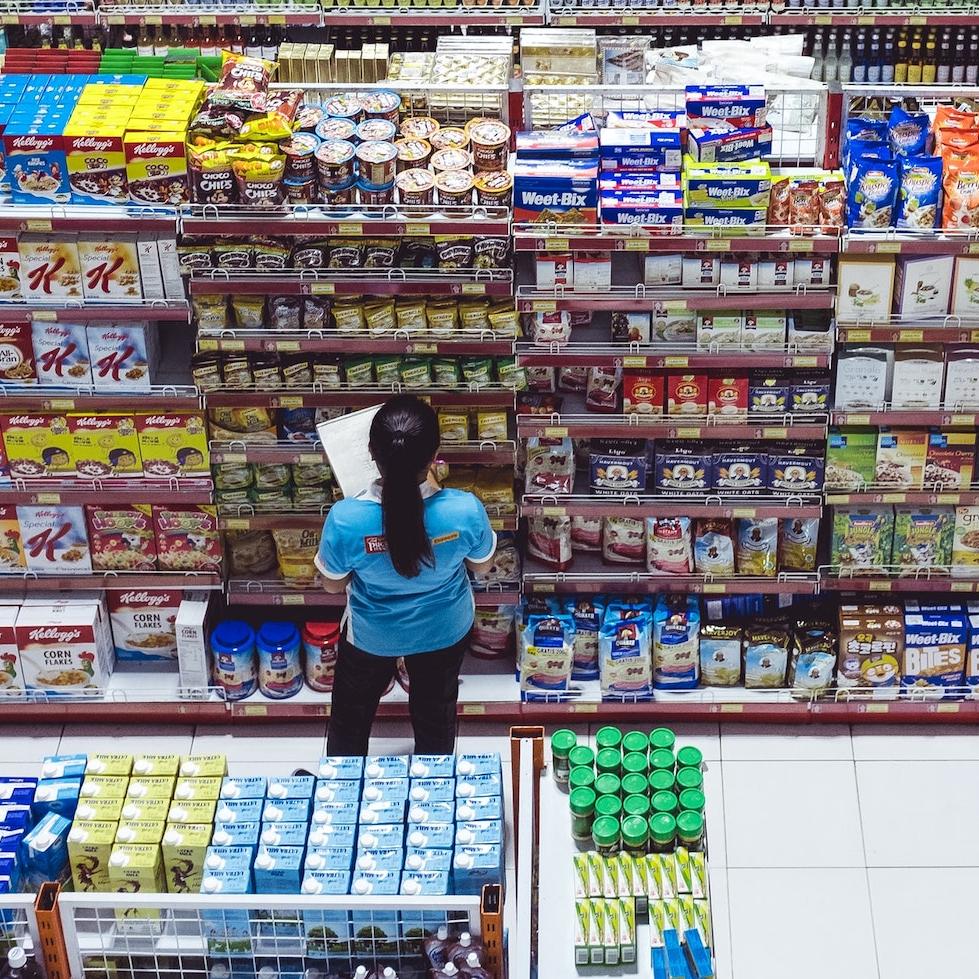
The U.S. House of Representatives is expected to vote on a $3 trillion coronavirus relief package today, following up on the last stimulus passed in late March. Released by House Speaker Nancy Pelosi on Tuesday, the $3 trillion proposal includes some elements of the so-called Essential Workers Bill of Rights introduced by Sen. Elizabeth Warren (D-Mass.) and Rep. Ro Khanna (D-Calif.) four weeks ago.
The proposed "bill of rights" is a 10-point policy plan to ensure essential workers have "the protections they need, the rights they are entitled to, and the compensation they deserve," Warren said in an April statement. This includes hazard pay, access to protective equipment like masks and gloves, universal paid sick, family and medical leave, and protections for collective bargaining, among other provisions.
Over the past four weeks, the bill of rights has gained backing from more than 75 progressive organizations and several prominent activists. Some elements have also garnered bipartisan support among lawmakers, although insiders predict that conservatives in the House are unlikely to support the proposed relief package due to its size and scope. Meanwhile, some activists and progressive lawmakers argue it does not go far enough.
Activists, lawmakers rally behind the Essential Workers Bill of Rights
Last week, actress and activist Jane Fonda's Fire Drill Fridays gathering — which has moved online in the wake of the pandemic — featured Sen. Warren, Greenpeace USA Executive Director Annie Leonard, and Fonda's "Grace and Frankie" co-star Lily Tomlin, who voiced their support for the Essential Workers Bill of Rights.
"The people who are being hit the hardest by COVID-19 are essential workers," Fonda said during the webcast. "They pick our food. They package our food. They look after our children and our elderly parents. Without them, our lives would become impossible. For life to move smoothly for us, those workers need to feel safe and respected."
Discussions around coronavirus relief have brought a wide scope of issues to the fore, providing an opportunity for activists and progressive lawmakers to make their case for the economic and social policies they've long supported, added Leonard of Greenpeace.
"It is true that COVID-19 has created hardship and horrors for many, many people, but it's also true that it's created openings that we can enter and seize to build a better future," Leonard said.
"For years — for decades, even — activists have been asking elected leaders for these basic things to make our economy more fair, more resilient, more healthy. We've asked for accessible healthcare, for workers' rights, for investments in a just transition to a clean, renewable energy economy. These things are so obviously needed, but it's often hard to even get these issues on the table for discussion. And when we do get them on the table for discussion, too often we hear the same refrain which is, ‘There's no money for that.’
"In these COVID stimulus relief packages, all these things are being discussed. It's an opportunity for all of us to push for the programs and policies that will make our country better."
The advocates encouraged webcast attendees to call their members of Congress in support of the bill of rights. Tomlin called hers, Rep. Brad Sherman (D-Calif.), live on the webcast, asking him "not to be a jerk" and to support the bill. A growing number of Americans agree with her, as petitions in favor of the bill of rights have collectively garnered hundreds of thousands of signatures.
"Essential workers are fighting for us, and it's time that we fight for them," Warren added as part of a recorded statement (she was in session during the event).
What's in the new House bill?
The proposed House bill up for vote today includes some key provisions from the bill of rights, including hazard pay for healthcare workers, healthcare and economic protections for essential workers regardless of immigration status, protections against eviction and foreclosure for renters and homeowners, funding for COVID-19 testing and treatment, and resources for hospitals.
It would also extend unemployment benefits and provide another round of direct payments to Americans, totaling $1,200 per adult ($2,400 per married couple) and $1,200 each for up to three dependents. A national moratorium on water shutoffs and $1.5 billion for low-income water aid, as well as $25 billion in support for the U.S. Postal Service, are also included in the bill.
Some House conservatives slammed a number of provisions in the 1,800-page bill, including forgiveness of student debt, as an unnecessary overreach. "I'm just mystified why my friends felt the need to inject a clearly partisan bill and think this is going to move us down the road in the right direction. It's not," Rep. Tom Cole (R-Okla.) said on the House floor today, as quoted by CBS News. Some progressive advocates, however, say the bill could do more.
The House bill is not enough to kickstart a green recovery, some advocates say
John Noël, senior climate campaigner for Greenpeace USA, praised the social elements of the proposed bill. But he noted it fails to include key provisions of the ReWIND Act, legislation introduced by Sen. Jeff Merkley (D-Ore.) and Rep. Nanette Barragán (D-Calif.) to prevent oil and gas companies from accessing stimulus funds. "Even this bill fails to put restrictions in place that would close the fossil fuel industry loopholes in the last relief package. Nor does it provide the certainty that all relief will be steered to the frontlines of the crisis and not to failing oil companies," Noël said in a statement.
Likewise, Natalie Mebane, associate policy director for 350 Action, the climate advocacy group founded by Bill McKibben, said "the bill does not go far enough to protect against bailouts of the oil and gas industry." Both 350 and Greenpeace have released their own sets of policy priorities they say will kickstart a "green recovery" from the pandemic while supporting fossil fuel workers who may be displaced.
Dan Lashof, U.S. director of the World Resources Institute (WRI), similarly observed that the bill does not contain relief or protections for clean energy workers, nearly 600,000 of whom have already lost their jobs.
“The House’s recently released $3 trillion bill includes essential support for impacted Americans across the country, but despite targeted support to certain industries, it offers no reprieve to the clean energy industry and the millions of people who support it," Lashof said. “The bill includes cash assistance to biofuel producers, despite their debatable environmental benefits, while failing to provide support to jobs in the wind and solar industries, which have clear and compelling benefits for cleaner air and a safer climate.”
The bottom line
Key elements in the Essential Workers Bill of Rights, including hazard pay for workers on the front lines, are supported on both sides of the political aisle.
On Thursday, a bipartisan group of lawmakers including Democratic Rep. Jerrold Nadler and Republican Rep. Peter King, both of New York, proposed another piece of legislation to establish a "compensation fund" for essential workers. The bill would “authorize appropriated funds as needed for five years,” Forbes reported.
Whether the House bill passes or not, conversations around essential workers' rights are unlikely to fade. “On September 11th, it was the firefighters and officers who ran into the burning buildings to save lives,” Rep. Carolyn Maloney (D-N.Y.) said in a press statement, as quoted by Forbes. “Today, it is hospital workers — nurses, doctors, EMS, janitorial staff, pharmacists, technicians — and all essential workers. We owe them more than applause at 7 p.m.”
Image credit: Bernard Hermant/Unsplash
Farmers Find Opportunity in a Disrupted Food Supply Chain


For small-scale farmers across the U.S., silver linings in the novel coronavirus pandemic are hard to come by. But in adjusting to a new reality, some of the country’s food growers are finding new customers, new business models, and a newfound flexibility to ease the pain of a food supply chain in disarray. Shifting toward direct-to-consumer models, rather than selling to restaurants, processors or retailers, these farmers are finding they have to innovate and find a new role within the wider food sector by necessity. But a more diversified food supply chain is expected to make them more resilient post-pandemic.
“Small is beautiful”
“This is one time where small is beautiful. When you’re small you can make these shifts much more easily,” David Mas Masumoto, a third-generation California peach farmer, told the New York Times recently. His 80-acre farm, Masumoto Family Farm, south of Fresno in the San Joaquin Valley, is in a good position, he says, because “we’ve always diversified,” selling their fruit not only to restaurants but to wholesale and direct sales as well. Like other farmers across the U.S., he sees community-supported agriculture (CSA) booming in light of the pandemic, with people staying at home eager to get fresh produce delivered weekly to their doorstep.
“Farmers don’t go on furlough,” is how farmer Lee Jones of The Chef’s Garden in Huron, Ohio—a 350-acre farm that grew produce exclusively for chefs—put it to the trade magazine Inside F&B recently. With the shutdown of the economy, “overnight our entire customer base was gone,” he told Inside F&B. Within 24 hours, he switched his business from chefs to home cooks, offering produce boxes on his website that ship directly from the farm to consumers.
In addition to the CSA programs, farmers are taking advantage of arrangements where customers pay up front and receive weekly or monthly “shares” throughout the season, or other options such as offering contactless pickup and home delivery. Some farmers are partnering with restaurants to sell their goods, like the 10 Los Angeles restaurants that are selling produce boxes to support local farmers.
An upended food supply chain forces farmers to pivot
As farmers pivot amid the pandemic to sell directly to consumers to cushion potentially devastating losses, many small-scale producers are hoping it is a trend that will outlast the pandemic. That includes the small family-owned cattle ranch Pilaroc Farms in Fayettville, Tennessee. The local meat producer has seen demand skyrocket, largely from hundreds of new customers who have discovered them online; business has never been better, according to farmer Jennie Patrick.
“Farmers have always adapted to difficult situations and now is no different,” says Erin Fitzgerald, CEO of the U.S. Farmers and Ranchers Alliance, which represents farmer and rancher-led organizations, and food and agricultural partners. “Whether it’s adopting more climate-smart agriculture practices or finding ways to grow more food for a growing population, they have always been very resilient. We are hearing countless stories of farmers stepping up to bridge the gap to consumers whether that’s changing their business model to sell direct to consumers, like Pilaroc Farms, or Dairy West launching their Curds and Kindness program that allows surplus milk to be made into cheese, butter and other dairy products instead of being thrown away. Some farmers are also selling directly to supermarket chains, such as Publix, which in turn donates the food to food bank programs such as Feeding America.
According to Fitzgerald, “Farmers are under more scrutiny than ever as consumers start to pay more attention to where their food is coming from during this time of uncertainty.” This trend also dovetails with a spike in consumer interest in more sustainable purchases. A recent survey from the consulting firm Kearney in April showed that 83 percent of consumers considered the environmental impact when making purchases, a significant increase over a year ago.
There’s plenty of food, but the supply chain needs to recalibrate
The fact that many farmers have had to destroy crops and even animals because of the lack of demand in the market has been widely reported, a painful irony at a time when food banks are overwhelmed. But Fitzgerald says that headlines miss the deeper story of what is happening on the farm and across the U.S. food supply chain.
“While there has been a lot of media coverage of the perceived food shortages, farmers need support in helping the American consumer understand that farmers are still farming and providing our nation’s food supply. The perceived lack of food supply is actually pinch points in the distribution system that are already beginning to work themselves out, so that the crops and livestock that farmers continue to grow and raise can continue to supply nutritious food across our country,” she says.
Still, Fitzgerald acknowledges there will be a rough road ahead, and that the food sector needs to create a blueprint for recovery that looks beyond the current crisis to launch action for the next decade of food and agriculture.
Image credit: LuAnn Hunt/Unsplash
Why This U.S. Tax Change Is a Good Boost For Philanthropic Giving


When the U.S. Centers for Disease Control and Prevention (CDC) announced the first known travel-related case of the novel coronavirus on January 21, 2020, that event was an early indicator that the pandemic's impacts would span far beyond its origins. As people worry about health risks, plus the consequences of a potential loss of work, many are restricting their spending. That trend may hurt philanthropic giving, which is so important to nonprofit organizations that rely on donations and grants to function.
There already had been evidence suggesting that philanthropic giving is on the decline. Statistics cited by Giving USA found that individual giving declined 1.1 percent in 2018 — accounting for a 3.4 percent drop when adjusted for inflation.
That downturn is particularly worrisome now that many households simply don't have the extra money to contribute, with as many as 36.5 million Americans unemployed due to the COVID-19 outbreak. Of course, some of the world's wealthiest citizens — like Jeff Bezos and Bill Gates — have made sizable philanthropic contributions. But their largess has gone to massive projects like developing a vaccine for COVID-19 or fighting climate change, so many nonprofits will have find new sources of funding or drastically scale back their work.
Subsequently, the federal government has stepped in to propose a new bill that would create a change in the tax code to incentivize citizens to boost their philanthropic giving. This decision may give some charities some assistance in these uncertain times, but will it be enough?
How are nonprofits coping?
Among organizations and nonprofits, food banks are bearing the brunt of the slump. Individuals have stopped volunteering or donating food and other items to practice safe social distancing. This lack of supplies and delivery workers has in turn inflated operating costs.
Carlos Rodriguez, president of the Community Food Bank of New Jersey, reported that his organization saw an 800,000-pound drop in the amount of donated food given during both March and April. Also, Food Bank For New York City announced it would temporarily suspend volunteer help and has shifted to hiring paid temporary workers.
Food banks that have managed to remain open rely on alternate ways to increase the incoming stream of supplies. Often, strategies involve connecting with funders before competing charities reach out. The struggles food banks now face are exacerbated by the reality that organizations that traditionally have donated huge quantities of food and other products have shut down.
Doing so, however, uses more of their hard-earned dollars. This funding method isn't sustainable in the long term, especially for organizations that had difficulties before the coronavirus posed additional challenges. The Nonprofit Finance Fund’s 2018 State of the Nonprofit Sector Survey found that 57 percent of respondents could not meet the existing demand from service users. The figure rose to 65 percent among organizations addressing needs in low-income communities. The COVID-19 pandemic imposes new threats to already burdened groups.
The CARES Act has a provision designed to increase philanthropic giving
To boost funding and help boost philanthropic giving, Congress created the Coronavirus Aid, Relief and Economic Security (CARES) Act, commonly known as the coronavirus relief package. This act revised the federal tax code to incentivize charitable giving, with an emphasis on food and monetary contributions. Moreover, this legislation established new deductions for cash donations, thereby benefiting taxpayers.
For example, one of the main charity-related portions of this bill states taxpayers may take a one-time deduction of up to $300 for gifts of cash made to charitable organizations in 2020. They can use this without having to itemize their deductions. For taxpayers who do itemize, the Internal Revenue Service (IRS) raised the deduction limit for charitable donations made in cash.
People can now deduct up to 60 percent of their adjusted gross income — a 10 percent increase compared to what the IRS formerly permitted. This factor means that many people who give substantial donations may anticipate larger tax breaks in 2020.
Rewriting to tax code to help nonprofits
While incentives from the coronavirus relief package may boost the number of small donations to nonprofits, these contributions won't be enough to keep food banks and other organizations open. Rather, nonprofits need an immediate cash infusion to sustain their relief efforts.
Many citizens can't fulfill this need right now, even with incentives. Subsequently, nonprofits will have to look to community development financial institutions (CDFIs) for aid. Still, these CDFIs may not be able to support these nonprofits or community organizations in the long term.
Thus, the federal government will have to find a more comprehensive solution for the issues surrounding reductions in philanthropic giving. The coronavirus relief package did bring about a $600 increase in weekly unemployment insurance benefits for which nonprofits don't have to make payments. However, it did not minimize the amount organizations will otherwise be paying for the spike in unemployment.
More than 200 national nonprofits signed a community letter that their allies delivered to Congress on April 8, 2020. It urges congressional legislators to consider a Nonprofit Track comprised of several modifications to the CARES Act. These adjustments included:
- Designating exclusive funding for nonprofits within the two principal loan programs in the CARES Act.
- Increasing the amount of the new $300 deduction for people who choose not to itemize, plus extending the timeframe beyond 2020.
- Raising the federal unemployment insurance reimbursement percentage to 100 percent of costs for self-funded nonprofits.
- Enabling taxpayers who contribute between March 13 — the date when the U.S. declared a national emergency — and July 16 to claim itemized or above-the-line deductions for those gifts on their 2019 tax returns.
The bottom line: nonprofits must remain proactive
The proposals discussed above could indeed stimulate individuals’ desire to give, thereby helping nonprofits continue operating during these difficult times. However, it is not yet clear whether Congress will take those actions or others covered in the group correspondence. Thus, charities should continue other options as they look for financial assistance via support programs, grants, loan funds and 501(c)(3) bonds to increase their resiliency.
Image credit: Sharon McCutcheon/Unsplash
U.S. Farm Bailout Overlooks Small Farms and Food Insecurity


Even if you haven't been financially affected by the COVID-19 pandemic, by now you know several people who are. Shutdowns and quarantine regulations have had an impact on almost every aspect of the economy. Government agencies say they are taking steps to help people in the crisis, but some critics argue they're not caring for those who need it most. And that same argument has applied to how the federal government is approaching the latest farm bailout program.
The U.S. agriculture sector has felt the force of the spread of COVID-19. In response, the U.S. Department of Agriculture (USDA) has announced a $19 billion relief fund for farmers, including $470 million to purchase food surplus. At face value, that’s a hefty amount of money, but critics say this farm bailout isn’t necessarily going to farmers who are in dire straits.
Challenges confronting agriculture amid COVID-19
Several problems are facing the farmers right now. Supply chain disruptions and the closings of restaurants and places reliant on food service companies such as school cafeterias have left many farms and ranchers with a surplus of produce, meat and dairy. The recession the novel coronavirus has triggered has also led to many farmers facing bankruptcy.
Farmers aren't the only ones in need, however. Many people across the U.S. have lost their jobs, landing them in poverty. These people need food but getting it when families short on cash, combined with the fact that food supply chains have been slow to adapt, has created countless challenges.
The difficulty in transporting supplies has been especially disruptive when it comes to food products with short shelf lives like milk or raw meat. Dairy farmers have had to dump tons of milk, despite the increased demand for it. People are going hungry, and farmers can't get food to them.
What are the benefits from this latest USDA farm bailout?
The USDA's latest relief fund is supposed to help struggling farmers and deliver food to hungry people. A multibillion-dollar farm bailout sure sounds like a lot of help, but you have to consider how it's distributed. Most of this money has gone to the largest farms.
Massive corporate farms employ a lot of people, but they're not the only ones out there. There are 65,000 dairy farmers in America, so if the USDA directs most of the farm bailout funds primarily to larger operations, tens of thousands of these food producers could be left out. That figure doesn't even include the meat and produce farmers who are also struggling.
The USDA's recent $470 million purchase of surplus foodstuffs does offer some assistance to those at risk of hunger. The agency has said it's doing the things it can to buy food and then transport it to those in need. But again, small farmers they are being left out of the equation – and they are often the ones that could provide food quickly to those who need it. In an interview with U.S. Agriculture Secretary Sonny Purdue, Lesley Stahl of 60 Minutes challenged him on how the federal government has distributed payments to farmers. Here’s how Purdue responded:
“The fact is, Lesley, most of our production in America is done by large farmers. That's just the way it happens. These are-- these are awards based on the production. And-- but we did try. We've got payment limits that cut people off.”
The COVID-19 pandemic has only made it worse for small farmers, according to Rachel M. Cohen of The Intercept. According to the reporting she and other journalists have conducted, the coronavirus stimulus package (also known as the CARES Act) has offered small farmers very little:
“… in the weeks following the CARES Act, farmers struggled to access any relief, as the agriculture aid stalled and many farmers found themselves ineligible for the Small Business Administration emergency loans. On April 10, 33 senators sent a bipartisan letter to Purdue, urging the USDA to follow the CARES Act and distribute federal aid to small farmers specifically. A week later, when the USDA finally announced how it planned to allocate the $9.5 billion from the CARES Act, it appeared that no money would be reserved specifically for small farmers.”
The crisis has hit farmers and USDA employees alike
The result is a lack of support for smaller independent farms, which need more help anyway. Monetary aid isn't the only thing farms need, either. Agricultural workers require medical personal protective equipment (PPE) to stay safe, but the USDA doesn't cover that.
The USDA hasn't even provided PPE to its own employees, around 200 meat inspectors who have contracted COVID-19 as of press time, according to one trade publication. As harvest season approaches, many farmworkers say they do not have the personal protective equipment (PPE) like face masks to help prevent COVID-19 from spreading. That puts thousands of workers' health at risk.
As COVID-19 continues to spread, the evidence suggests more small farms will go out of business. The pandemic is taking a toll on the sector, especially on independent workers. Agriculture itself will eventually outlive the coronavirus, and some farmers are adapting quickly to the new reality they face; the data, however, suggests we’ll see more farmers go into bankruptcy; many farms will disappear altogether.
Image credit: Tom Fisk/Pexels
Companies Risk Irrelevance If Shabby Treatment of Essential Workers Continues
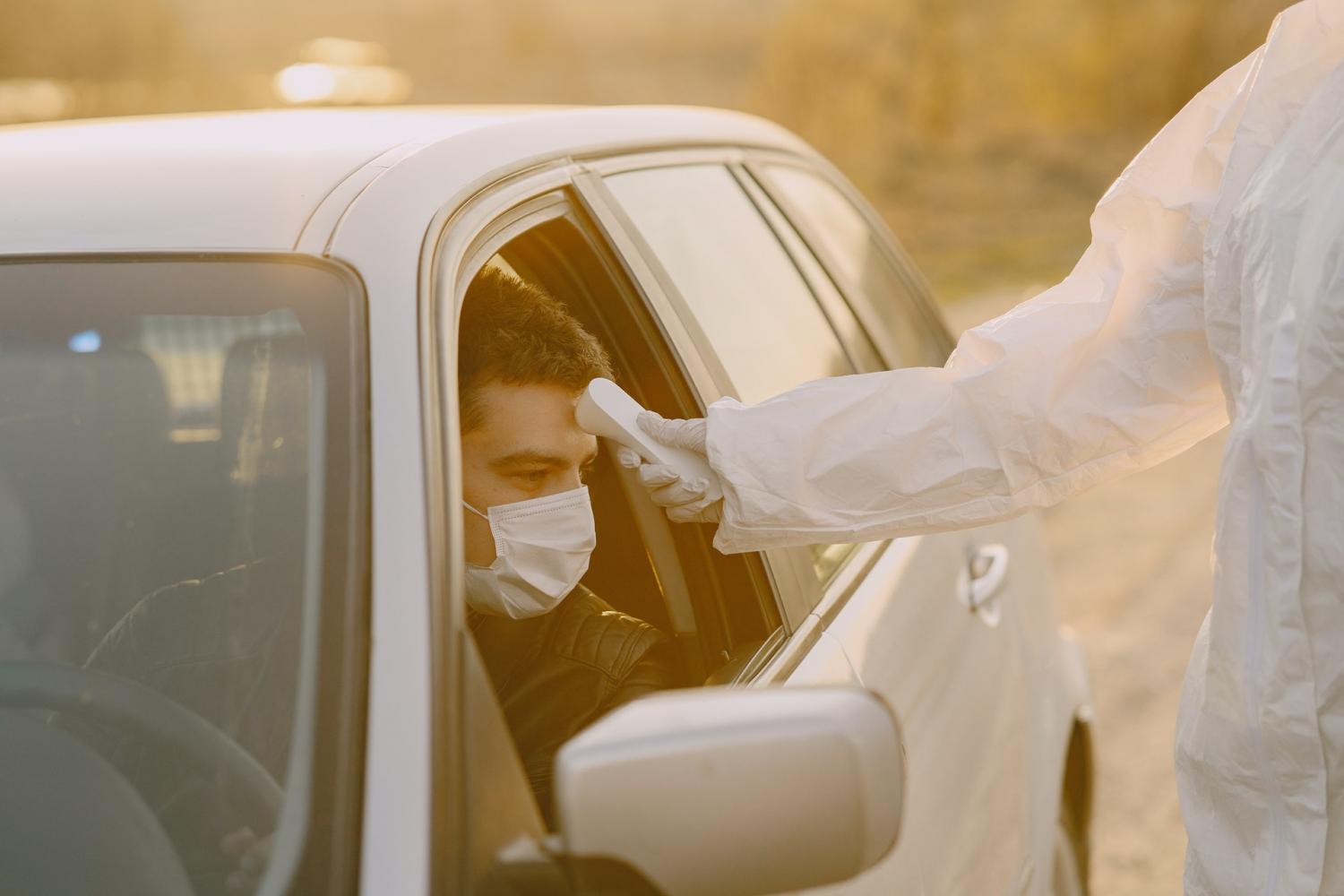

As this pandemic enters its third month, we’ve seen essential workers first overlooked, then celebrated and, now, as they still show up to their jobs while worrying about their health, much of corporate America has put their concerns on the back burner.
It’s curious how Starbucks, America’s largest coffee chain, has by and large stood out for how it is cautiously reopening stores and prioritizing the concerns of workers. Many may question whether grab-and-go coffee and a scone is “essential,” but to its credit, Starbucks' reopening plan suggests the company is taking the health threats of COVID-19 seriously.
Meanwhile, the country’s largest grocer recently told employees that its “hero pay” is ending this coming Sunday. In contrast, some retailers, including Walmart, have taken action by making face masks mandatory; Walmart says it will offer them to workers if they don’t have any. Nevertheless, across the U.S., the data suggest many workers don’t feel safe while they are on the clock.
In one survey from The Shift Project, only a quarter of retail workers and about 40 percent of warehouse employees reported new or updated cleaning procedures. Depending on the workplace, whether that be a convenience store, fast-food outlet or big-box store, strong policies are often lacking: Mandatory mask policies were only found at anywhere from 2 to 7 percent of U.S. retail locations, according to the survey.
The most gaslighting, however, has come from the U.S. meat industry. While meatpacking plants across the country have ranked among the worst COVID-19 hot spots, workers within this sector are still struggling to obtain safer workplaces as a result of these outbreaks. In fact, some politicians have blamed workers for spreading the virus, citing their “crowded” conditions as they often live in the same apartment buildings or within the same space. Rather conveniently, many of these workers are immigrants — and few have raised the question of whether their shared living spaces are a result of their low wages. The worst part of this situation is that these meat companies have not come to their employees’ defense.
While the curve in some parts of the U.S. is flattening, the numbers at a macro level suggest otherwise. Some hustle across America’s C-suites would have been advisable many yesterday’s ago, but it’s not too late. The recovery from this pandemic will be slow and painstaking as many people will be far too skittish to return to their normal habits, even after local governments start lifting restrictions.
Memories of the country’s worst hotspots, whether they are towns, stores or restaurants, will be burned onto our collective memory. And brands that insist they are taking this pandemic seriously will want to boost efforts to protect employees now if they hope to secure their reputations into the future.
From the Brands Taking Stands newsletter. Be sure to subscribe!
Image credit: Gustavo Fring/Pexels
Tired of Waiting For Protections, Essential Workers Take Matters Into Their Own Hands
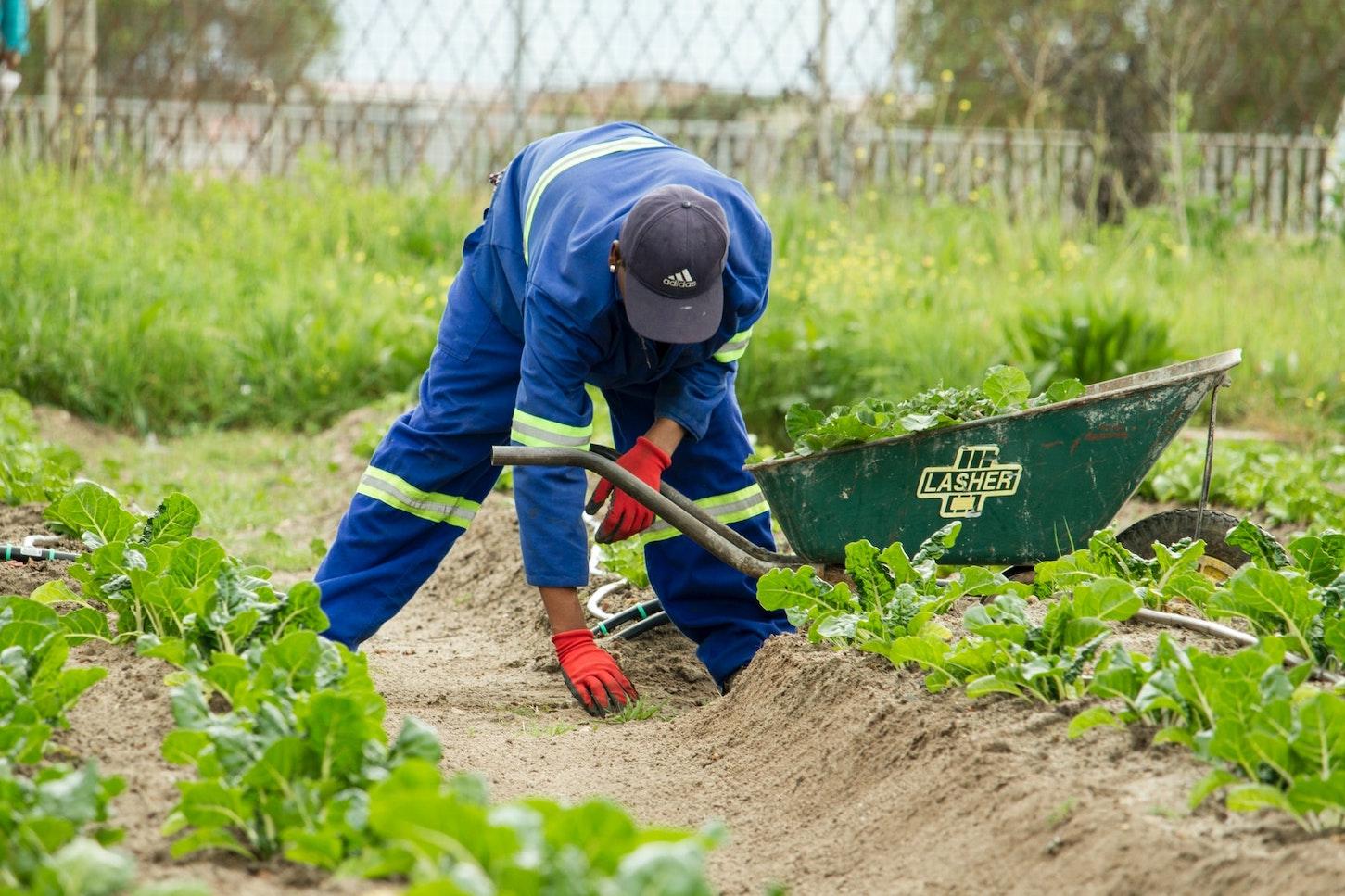

The new coronavirus relief package proposed by U.S. House Speaker Nancy Pelosi on Tuesday includes some elements of the so-called essential workers "bill of rights," an encouraging sign for activists. But some essential workers aren't waiting for the government — or their employers — to step in and keep them safe.
On Thursday, the Interfaith Center on Corporate Responsibility (ICCR), an investor group with over 300 member organizations representing more than $500 billion in managed assets, brought essential workers from across sectors together to tell their stories on a live webcast. Their perseverance through unimaginable strain shows the new face of employee activism in the wake of the coronavirus. But don't call them heroes, they ask insistently — give them the respect and protections they deserve instead.
Healthcare workers call on their employer for protective equipment
Those who shared their stories include Patricia Diaz, a registered nurse at a HCA Healthcare-affiliated university hospital in Tamarac, Florida. HCA is the largest hospital chain in the U.S., received $700 million in the last coronavirus aid package, and is listed on the New York Stock Exchange. But Diaz says she and her coworkers in HCA's Tamarac hospital are not receiving adequate equipment to protect themselves and their patients. One of her colleagues has already tested positive for the coronavirus, but not before unknowingly spreading it to her two children.
"What we are seeing goes against everything we were taught," Diaz said. "In my 23 years as a nurse, I would never have thought we'd be asked to reuse [protective equipment] or not be provided with the right equipment for our safety."
Diaz is one of hundreds of HCA employees who have signed on to a letter urging the company to ensure adequate and sterile protective equipment, provide universal testing for the coronavirus, and guarantee affordable healthcare and paid sick leave for affected workers. "We need investors in HCA to reach out to the company and ask them to make sure that we have the items needed so that we can take care of our patients, ourselves, our families and our community," she added.
Essential workers in retail turn to shareholder activism
Likewise, Cynthia Murray, a Walmart employee from Laurel, Maryland, isn't waiting for lawmakers — or her employer — to act. She filed a shareholder proposal to allow hourly retail workers to be eligible for seats on Walmart's board of directors. "Associates have important insight into corporate operations that would support good governance," Murray said during ICCR's webcast. "None of the independent directors report having retail experience. Our voice is needed."
While Walmart has approved policies to provide protective equipment and ensure social distancing within retail stores, Murray says these are not consistently enforced, leading to lapses that have created coronavirus hotspots at several Walmart locations across the U.S.
"Every day with coronavirus is like Black Friday in my store. Even though there are policies on customer limits, there aren't enough staff to actually enforce them," said Murray, age 63. "At a recent shift, I was given one set of gloves for the whole shift. We're told to put them back on after lunch or using the restrooms. Maintenance workers in my store were only given two pairs of gloves for the whole day."
Murray says hourly worker representation on Walmart's board would serve to address blind spots between company policies and what's actually happening on the ground. Shareholders will vote on her proposal during the company's annual meeting on June 3.
Florida farmworkers lobby the state government for critical services
Meanwhile, Gerardo Reyes Chavez, a key leader with the Coalition of Immokalee Workers (CIW), is pressuring Florida's state government to better protect the farmworkers he represents. "This crisis has brought a lot of the things that we have been confronting as workers prior to the pandemic to the front — a fight to be able to be seen, to be able to be recognized," Chavez said.
Those represented by CIW are predominantly migrant farmworkers who live in mobile homes with up to a dozen other people. They travel to work by bus in numbers of 30 or more. They were not afforded relief in the last coronavirus stimulus, and Chavez said they are not provided with protective equipment. "It is impossible for people to observe social distancing," he said. "On top of that, there were no tests available for our community. When you think about all of those things combined, we are like dry tinder in the path of a wildfire."
Chavez and the CIW sent a letter to Florida Gov. Ron DeSantis, asking him to respond with testing, protective equipment and a field hospital to treat those affected by COVID-19. For farmworkers in Immokalee, the nearest hospital is 40 minutes away in Naples, one of the wealthiest cities in Florida.
"Just to give you a sense of the lack of appropriate response in our context, in about a month there were only around 160 tests for a community made up of 25,000 to 30,000 people," Chavez explained. Of those 160 tests, 60 came back positive, he said.
More widespread testing was made available at the beginning of May, and Chavez said nearly 1,400 workers showed up to be tested. "It is very, very important right now to be able to understand what percentage of people come back positive so that we can respond to that," he told investors, business leaders and press on ICCR's webinar. "[The state] has effectively ignored all of the suggestions that we have been making since the beginning. This is just wrong, because it's putting the lives of workers at risk."
The humanitarian crisis in Immokalee, as well as on farm fields in Eastern states from Georgia to New Jersey, is intrinsically linked to our food system. Farmworkers represented by the CIW produce 90 percent of the fresh tomatoes harvested in the U.S. between November and May, along with several other staple fruits and vegetables which are predominantly sold on the U.S. East Coast.
"Cities that are right now dealing with this crisis — cities like New York and others on this side of the country — are depending on the food we are producing," Chavez said. "If people get sick in the fields, that's going to unravel another crisis that is already showing its ugly face in regards to the meatpacking sector."
The CIW is engaging with stakeholders in its Fair Food Program, which includes growers across seven East Coast states, as well as 14 retail companies that condition their purchasing on the implementation of worker protections. But Chavez warns that "all of the efforts of mitigation mean nothing if there are no concrete ways to respond to the needs that will emerge very soon in our community."
Activist investors and labor unions rally behind essential workers
As essential workers fight their own fights at the local level, labor unions and investor coalitions are bringing the conversation to the national stage. The ICCR spearheaded the Investor Statement on Coronavirus Response, signed by 314 investors representing over $9 trillion in assets, which outlines actions investors are seeking from companies to protect worker safety.
Separately, the Service Employees International Union (SEIU), which represents more than 1.5 million people across the U.S., launched the Protect All Workers campaign to demand "immediate, sweeping action" from CEOs. Among their demands are emergency childcare funds, debt relief, housing assistance, and fully funded and accessible healthcare for every U.S. worker, including free COVID-19 testing and treatment.
Neal Bisno, executive vice president of the union, addressed investors on ICCR's webcast directly, asking them to support essential workers. "Governors are beginning to force workers back to work, often in situations that don't meet the current federal administration's own criteria for lifting safety restrictions," he said. "It's just wrong to send people back to work and into public spaces without a safe, well-managed plan. We simply can't ask people to choose between their health and their paycheck — and companies that ask workers to do so are companies that should not receive your investment."
Image credit: Anaya Katlego/Unsplash
New Reporting Framework Highlights Employee Health and Well-Being


The responsibilities of businesses to look after their workforce are under the spotlight due to the COVID-19 crisis. Companies are feeling intense pressure to show that employee health and safe workplaces are high priorities as they make plans to reopen for business. The new Culture of Health for Business Framework (COH4B) is a way for companies to transparently report on those practices — and where they need to step up in light of a global pandemic.
Recognized by Fast Company’s 2020 World Changing Ideas Awards, the Culture of Health for Business Framework was developed in 2019 by a group of leading companies, nonprofits and academics with support from the Robert Wood Johnson Foundation (RWJF). The Global Reporting Initiative (GRI), the leading global sustainability reporting organization, was among that group and has endorsed the framework. It has mapped existing GRI Standards to the framework to help companies report on their progress on employee health and well-being.
This pandemic has brought employee health to the forefront
The culture of employee health is a prominent topic in C-suites and board rooms today, as companies grapple with how to reassure employees, investors and others that they can guarantee a safe workplace. So far, many companies are falling short. Paid sick leave is just one example, with COVID-19 bringing that debate to the forefront, as TriplePundit’s Megan Amrich has reported.
In the U.S., almost 1 in 4 workers do not receive sick pay. As news reports, including this recent article in the New York Times, indicate, companies that do not provide paid sick leave are endangering their workers and customers. This is particularly significant in the age of pandemics. Affordable and accessible health insurance is another critical need for the nearly 30 million uninsured Americans, most of whom are low-income family members.
Low wages, meanwhile, are associated with poor health outcomes for workers and their families, including limiting access insurance and healthcare services. Often it is these low-income households that are employed in the roles deemed essential during the pandemic , including grocery stores, warehouses and manufacturing. Increasingly these workers are voicing concern that workplace health and safety measures are inadequate.
Companies need a holistic approach to health
That’s where the Culture of Health for Business Framework comes in, says Piya Baptista, program implementation manager for the Global Reporting Initiative. She argues that during the COVID-19 pandemic, businesses cannot take a back seat when it comes to employee health, and it’s not enough to cherry-pick easy solutions in isolation. “Rather it has to be a forward-thinking, holistic approach to health which is multi-faceted and spans multiple departments including occupational health and safety (OHS), human resources, sustainability, legal and marketing,” Baptista told TriplePundit.
She notes that while many companies have done at least some reporting on performance around areas such as OHS, that is often legally mandated. As she explained to 3p:
“What’s been lacking so far has been this deeper and broader data-driven narrative around health and well-being. There are a broad set of actions that companies can take to impact health and well-being. That’s not just OHS or a wellness program, but aspects such as wages, discrimination, jobs, security, product marketing, environmental impacts and many of the other practices that are highlighted in the Culture of Health for Business Framework. Disparate issues related to health might get reported, but we haven't seen that cohesive story. That is an opportunity for growth for companies.”
A framework that highlights 16 best business practices for health
For companies prepared to take a deep dive into their health policies and practices, the supply chain should not be overlooked, Baptista adds. “For many industries, the impacts on health and well-being are going to be in the supply chain, in their manufacturing facilities. It’s one thing to manage your own workforce, but what is your company really doing to understand what's happening in the supply chain?”
GRI has a number of existing standards that can help companies understand and disclose their impacts on health and well-being on a broad set of stakeholders. The Culture of Health for Business Framework (COH4B) can help companies identify a set of business practices that impact health and well-being and start disclosing more or improve disclosure by using the GRI Standards with COH4B.
“Currently there's no existing tool linked to the GRI Standards that helps companies to take such a broad and forward-thinking view to understand their impacts on health and well-being,” Baptista said. She points out that it is similar to the Task Force on Climate-Related Financial Disclosures (TCFD) in helping companies understand their impacts on climate or the U.N. Sustainable Development Goals (SDGs) in thinking about big development problems. “There are other health initiatives and frameworks out there, but this is a pioneering, holistic framework on the role of business in impacting the health and well-being of its stakeholders, linked to a curated set of business practices,” she said.
The 16 evidence-based business practices cut across a wide range of environmental, social, and governance (ESG) issues, to help businesses build and promote employee health and manage impacts on population health through their operations, advocacy, marketing, and philanthropy.
If human capital is an asset, now there’s a directive to prove it
Baptista expects that companies will be revisiting materiality assessments in light of COVID-19 and that the framework can be a useful addition to that process as well as stakeholder engagement. “The pandemic has brought a renewed and urgent focus on the role companies play in supporting population health. Recognizing health and well-being as an ESG issue, and increasing and enhancing disclosure, is a crucial step and a leadership opportunity for corporations to recognize their responsibilities and take action as a result,” she told us.
The Virtual GRI Reporters’ Summit North America on June 16 will feature a session on the Culture of Health For Business Framework. Also in June, GRI will release additional resources to support use of the framework, followed by a global public webinar in August. Baptista encouraged companies to contact her if they want to learn more at grinorthamerica@globalreporting.org.
She adds: “The framework encourages companies to pose the question: do they truly believe that human capital is an asset and one that they should build up? And what role do they have to play in impacting health of communities? Do their actions match their words? How can they build resilience and develop a future fit strategy to prepare for all kinds of scenarios? We will see how things pan out, but I'm hopeful that this framework will start to change and broaden the conversation around health and well-being.”
Image credit: Daria Nepriakhina/Unsplash
COVID-19 Imposes a Life-and-Death Test for Corporate Citizens
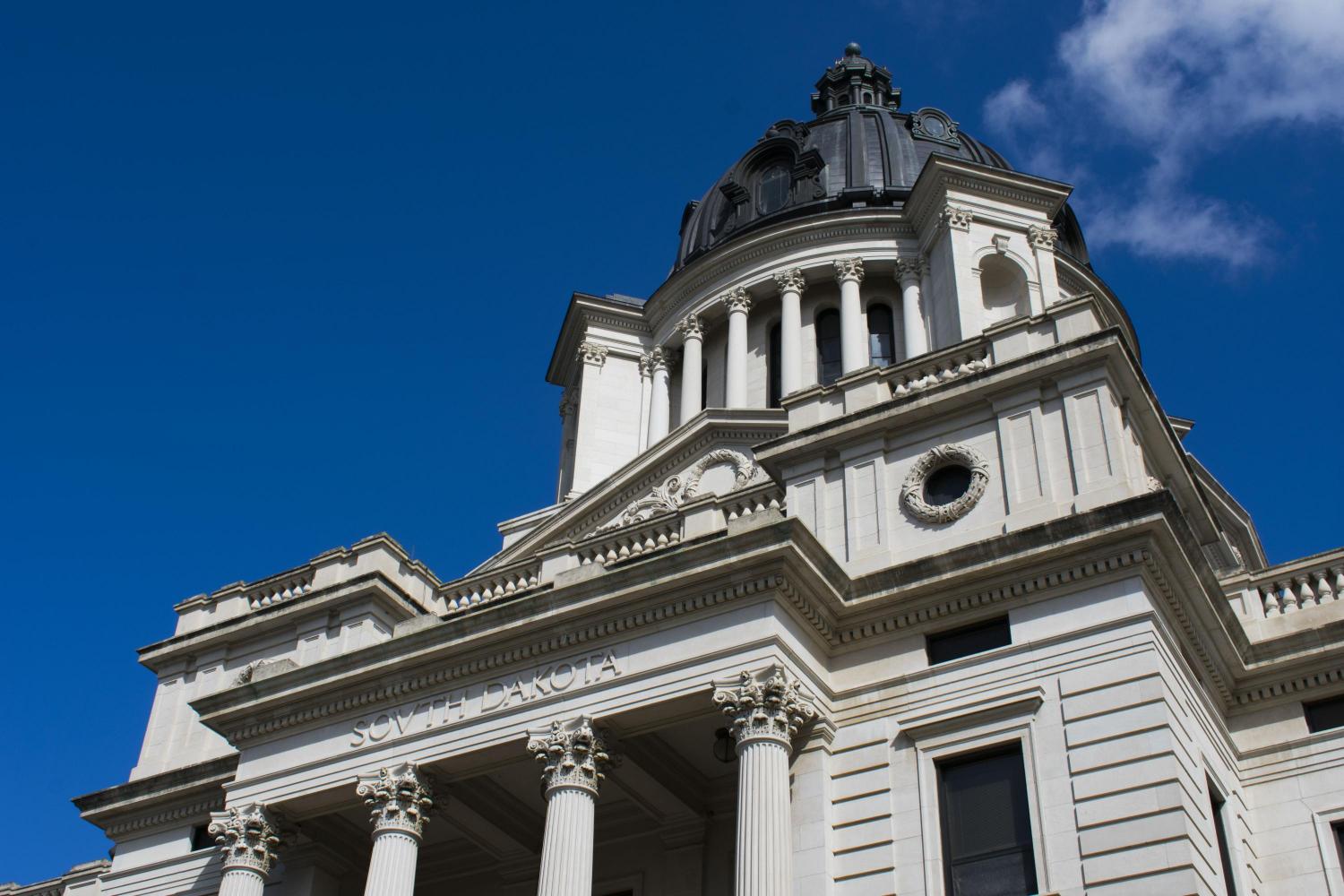
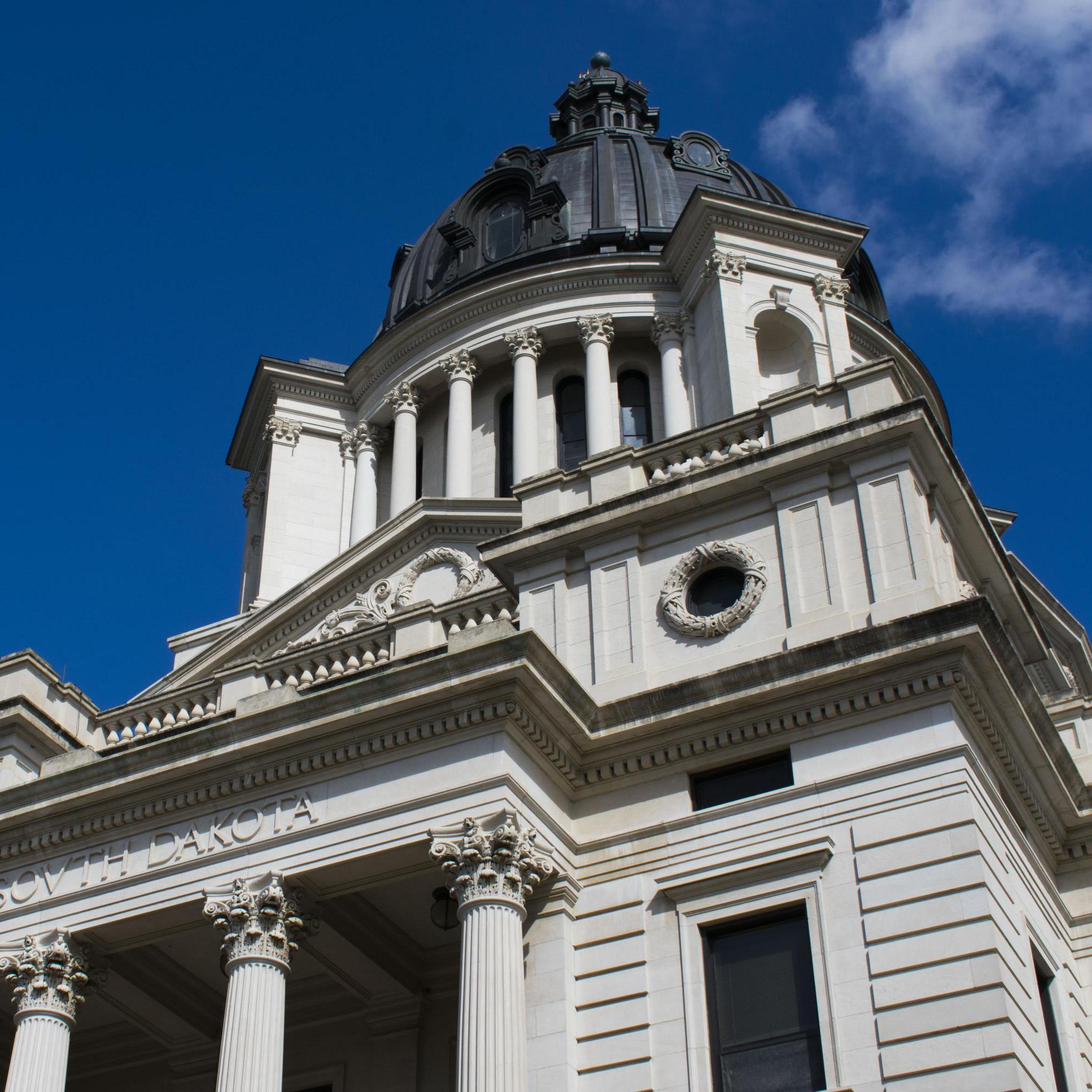
As Dr. Anthony Fauci made clear in his public testimony before Congress on Tuesday, states that ignore federal COVID-19 reopening guidelines risk triggering uncontrolled outbreaks of the deadly virus. That concern is especially evident on Native American tribal lands, where public health resources are already stretched thin. As demonstrated by the situation in South Dakota, the premature re-opening issue is also fraught with challenges for corporations that are trying to establish a firm record on social responsibility if their host states pursue a seat-of-the-pants policy on COVID-19.
South Dakota never closed for COVID-19
In regards to corporate social responsibility under COVID-19, South Dakota has become noteworthy due to Republican Gov. Kristi Noem’s refusal to issue a stay-at-home order.
Noem has not backed down, even though a major employer in the state — the meatpacking industry — has seen some of the worst outbreaks.
In mid-April, months after the lethal impact of COVID-19 became evident, a Smithfield pork plant in Sioux Falls won the dubious distinction as the “nation’s top coronavirus hotspot” at the time. By May 11, Business Insider reported that hundreds of workers at the Smithfield plant were diagnosed with COVID-19, and two have died.
Business Insider further reported that both Noem and a representative from Smithfield have publicly blamed the outbreaks on workers’ home life, implying that employees failed to voluntarily observe social distancing in their communities. The expert consensus, though, is that working conditions make major meatpacking plants particularly vulnerable to outbreaks.
Native Americans in South Dakota take control of COVID-19 narrative
The victim-blaming narrative articulated by Noem and Smithfield is reflected in the situation on tribal lands in the U.S. Native American communities that have been hit hard by the COVID-19 crisis, but failure to observe social distancing is not the heart of the problem.
In fact, some Native American communities have gone to extraordinary lengths to prevent COVID-19 transmission, even within states that are not following federal guidelines.
South Dakota is a case in point. One key action took place during the first week of April, when the Rosebud Sioux Tribes and the Fort Belknap Indian Community joined a lawsuit to stop construction of the Keystone XL tar sands oil pipeline. They argued that an influx of outside workers could spread COVID-19.
On April 15, a federal judge issued a ruling that effectively put the Keystone XL project on hold over an environmental review issue. That ruling is still in place as of this writing.
In a broader move, in April several Native American communities in South Dakota established COVID-19 checkpoints along public roadways, including at the Sioux Cheyenne River, Pine Ridge and Standing Rock reservations. Journalist Bob Mercer detailed the efforts in a long-form report for Keloland News.
Though the checkpoints have been characterized as roadblocks, Cheyenne River Tribal Chairman Harold T. Frazier has pushed back against that description. In an April 26 letter to the Bureau of Indian Affairs cited by Mercer, Chairman Frazier listed the legal justifications for establishing checkpoints.
“We are simply regulating travelers’ entry onto the Reservation in an attempt to prevent, reduce, and track the spread of the COVID-19 coronavirus here in the Cheyenne River Sioux Reservation,” he explained.
Islands in a sea of uncertainty
By May 11, the South Dakota tribes were embroiled in a legal standoff with Noem, who has threatened legal action this week to remove the checkpoints. So far, the tribes have held firm. "We will not apologize for being an island of safety in a sea of uncertainty and death,” said Frazier in a statement.
That is as much a challenge to the business community as it is a defense of the checkpoints. Smithfield, for one, has found itself struggling to reassure workers that it is safe to return. Though Smithfield has disowned the victim-blaming comments attributed to a company representative, Noem’s remarks (first reported by Buzzfeed News on April 20) continue to muddy the waters.
Adding fuel to the fire, last week Politico reported that Health and Human Services Secretary Alex Azar was still trafficking in victim-blaming, attributing COVID-19 hotspots in the meatpacking industry to “‘home and social’ aspects of workers' lives rather than the conditions inside the facilities.”
Another state to watch is Georgia, which appears to be fulfilling Dr. Fauci’s warning about prematurely opening for business. In an echo of the situation faced by Native American communities, part of Georgia’s problem appears to be an increase in traffic from neighboring states.
If companies in any industry are serious about their responsibility to protect workers and their communities, they could take a cue from the response of Native American communities and lobby their hosts states more aggressively to support a coordinated federal policy based on sound science.
Image credit: South Dakota Bureau of Administration
Restaurant Innovation Takes a High Road by Staying Open While Paying a Fair Wage


As the restaurant industry continues to be crushed by coronavirus shutdowns, establishments across the country are seeking unique ways to help others while staying open. The High Road Kitchens project is the latest example of restaurant innovation and industry ingenuity, providing work, food and funding for independent restaurants throughout California.
High Road Kitchens (HRK) was created by a team of chef-activists in response to the increasing unemployment and food insecurity amid the COVID-19 crisis in the U.S.
Founding partners include Daniel Patterson, co-founder of The Cooking Project; Robert Egger, founder of D.C. Central Kitchen; and Saru Jayaraman, president of One Fair Wage and director of UC Berkeley’s Food Labor Research Center. The program launched on May 1 with 13 participating restaurants. While One Fair Wage manages High Road Kitchens, a variety of state and local governments, as well as NGOs, together handle program funding.
“We wanted to find a way to continue our mission of good food for everyone,” Patterson said. “High Road Kitchens can provide support to allow cooks to return safely to their kitchens where they can do what they love, make food for their communities.”
A new wave of restaurant innovation
Participating restaurants commit to provide 500 free meals to low-wage workers, healthcare providers, and those in need. They also offer sliding-scale priced meals via takeout and delivery. Patrons can select to pay anywhere from $5 to $20 per dish, with the hopes that those who can will “pay it forward." The restaurants must also agree to adhere to One Fair Wage’s membership guidelines, providing just wages for all employees.
In return for their participation, HRK restaurants receive an initial grant of $18,000 to $25,000 to help owners purchase food and supplies, while allowing them to hire and rehire employees. The owners will also receive training over the next year through One Fair Wage’s High Road Training and Technical Assistance program. This course shows employers how to “take the high road” as they approach a new path toward restaurant innovation and provide all employees with livable wages and increase race and gender equity while remaining profitable.
“A lifeline for restaurants”
Argentinian bar and café Barcito is one of two Los Angeles restaurants participating in High Road Kitchens. (The other is Daniel Patterson’s Alta Adams.) In an interview last week on the KCRW Good Food podcast, Barcito’s general manager and owner, Andrea Borgen, said the goal of High Road Kitchens is “to give a lifeline to these restaurants we know will be good employers in the future.”
When the shutdown started in March, Borgen said she began to search for new ways to “keep the restaurant relevant” and continue keeping her staff on payroll. Like many restaurants, Barcito is now focusing on takeout and delivery business, with new offerings like pantry items and meal prep kits. While the profit margins on the HRK meals may be less than on these other offerings, they are enough to keep Barcito open.
“I’m optimistic about the sustainability of this,” Borgen said in assessing this wave of restaurant innovation.
What’s next for High Road Kitchens?
Moving forward, organizers hope to secure foodservice contracts for High Road Kitchens with community institutions like senior centers and schools to provide long-term ongoing income to local businesses.
There is also talk of program expansion. Currently, all High Road Kitchens restaurants are located in California – specifically in Los Angeles, Monterey, Oakland, Sacramento, San Diego, San Francisco and San Jose. Next steps include adding more financial sponsors and California restaurants, and eventually branching out into New York City, Boston, Washington, D.C., and Michigan.
“We can all agree that what we were doing before was not necessarily working,” Borgen said. “It’s time to build a better industry for everyone involved.”
Image credit: Max Delsid/Unsplash